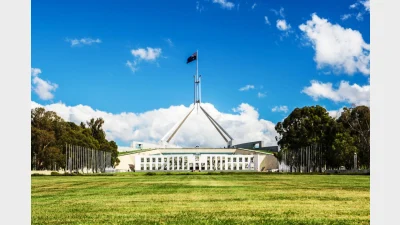Can SMSF performance match their popularity?



SMSFs have continued their growth path in Australia but, as Damon Taylor reports, their popularity is not always matched by their investment performance.
Though investment markets, both global and domestic, have experienced their fair share of ups and downs in recent years, it seems the popularity of SMSFs has remained steady.
Of course, the logical assumption to be drawn from that trend is that such popularity has been based not only on flexibility and control but also on solid performance, and yet for Philip La Greca, technical services director for Multiport, proving and reporting that performance is difficult.
“This is probably one of the dilemmas we have in this sector,” he said. “That gauging SMSF performance and returns is so difficult because there isn’t exactly great data.
“Now, I know the Australian Taxation Office [ATO] put out some data just before Christmas where they tried to put forward some historical rates of return on asset types to address this issue,” La Greca continued.
“But the problem you have is that it’s such a diverse sector; you’re looking at average performance across 400,000 funds when you look at that ATO data.”
And the question, according to La Greca, lies in how useful those average performance figures actually are.
“Because even within our own client base, I’ve seen funds that have had really good performance but I can also point to clients whose performance is atrocious,” he said.
“It really depends on what they actually invest in.
“So I think there are two things that this highlights and they’re also what the debate really has to come down to,” La Greca continued.
“That is, is the client actually being told what his rate of return is or is the trustee actually working it out?
“Because they might think that they’re doing well, or at least better than X industry fund or Y retail fund, but are they really?”
Indeed, the key point when looking at the data referred to by La Greca and contained within Self-managed superannuation funds: A statistical overview 2008-09 is that it is data that was released in late 2011 and yet it is already two years old.
So while those statistics may show that SMSF popularity has been justified by their performance (16.7 per cent, -6.3 per cent and -6.7 per cent across 2007, 2008 and 2009 as compared to 14.5 per cent, -8.15 per cent and -11.7 per cent for APRA-regulated funds), can trustees adequately assess their performance so long after the fact?
However, assessable or not, Peter Hogan, principal of Plaza Financial and director of the Self-Managed Super Fund Professionals' Association (SPAA), argues that one of the main reasons SMSFs have performed so well is investment flexibility.
“One of the things that self-managed super funds do offer in terms of a return is a higher degree of flexibility,” he said.
“Trustees are able to move the whole of their fund into more defensive assets when they think its appropriate, and perhaps be a little bit more nimble when they think it might be time to move back into markets as well.
“That’s as compared to writing off to a funds management and saying that they want to cash out this investment, which takes a day or two, and then saying that they want to invest in this other investment, and that takes a day or two again.”
For Hogan, although such an attraction is a subset of the flexibility and control that the SMSF sector can so readily boast, it is nonetheless a vital factor when measuring its returns and overall performance.
“Of course, the question of whether that nimbleness results in better returns or not is a hard one to answer,” he admitted.
“At the moment, the evidence we have is probably anecdotal more than anything else.”
Looking to Stronger Super, La Greca said that it was his hope that the upcoming rollout of reforms in the SMSF space would enable greater reporting and therefore greater performance comparisons.
“I’m hopeful that some of the reporting requirements will actually force true return calculations to be done,” he said.
“Because there’s nothing that actually says that they have to be done at the moment. That’s where we need to go, and I think some of the discussion around things like tightening up investment strategies – so that you actually have measureable benchmarks, and that you do actually measure against those benchmarks – will actually help focus that,” La Greca continued.
“But this is part of the problem. That’s what should happen in the process of every investment decision.
“I mean, take gearing in property, which has become very popular lately, as an example. Just because you can do it, that doesn’t mean that you necessarily should.”
According to La Greca, having to quantify investment objectives and actually benchmark them will force those investment decisions to be made properly.
“If you suddenly say that your investment objective is to return 3 per cent over inflation, then you can say ‘if I’m going to buy this, is it actually going to meet that objective?’” he said.
“You have to do the maths and perhaps see that you’re going to get 6 per cent income on a $500,000 investment but be paying out 7 per cent interest on $300,000.”
“So your net isn’t actually that 6 per cent that you might have originally thought – and it’s that realisation that isn’t necessarily happening at the moment.”
The final factor to consider, according to Hogan, is the reality that SMSF trustees often have the ability to make direct investments.
“They’re reducing a layer of fees and that’s going to have an impact on return as well,” he said.
“In fact, that’s often a motivation for people to have their own fund: to appreciate that a fund manager has to be paid for managing investments, but to realise that if they do that directly themselves, that’s one more fee that they don’t have to pay.
“And whether that’s a false saving or not really depends on the return at the end of the day – something I guarantee can be argued well on both sides of the fence.”
La Greca compared the fee factor to investment selection and strategy as well.
“So somebody who’s saying that they really don’t want to be in the market – they’re picking term deposits and securities that are in that sort of a space,” he said.
“And there’s obviously some cost savings that they may be getting from those structures which therefore reflects straight through to their return.
“They’re not necessarily putting in other layers of costs that have occurred into the process,” La Greca continued.
“And that’s the reality of it. The place where SMSFs really start to pull their savings is going to be in those intermediary layers of costs because, at the end of the day, the difference between a self-managed super fund holding equities and a big fund holding equities is what?
“The equity is going to perform exactly the same, it’s the cost of holding it that varies.”
As an example, La Greca pointed to the costs involved in trades for an SMSF.
“So if you trade a lot, then you may find that your costs are higher, because obviously an SMSF is going to have smaller volumes with trading costs that are relatively fixed,” he said.
“So if you're paying CommSec $19.95 for a trade and you’re only doing a $1,000 trade, the cost for that trade is quite high proportionately.
“On the other hand, if I'm a big fund I'm getting a much better trade price, even though I'm buying and selling exactly the same stock,” La Greca continued.
“It’s the same asset, and so the performance of the asset isn't going to be different.
“It’s really the costs incurred in holding, maintaining, acquiring – that’s where your savings will come.”
According to La Greca, costs can make a particular difference if an SMSF trustee is holding their assets rather than doing active trading.
“For a start, you don't have to pay a custodian,” he said.
“And that cost might not be a lot, but in the current environment, if you take 5 to 10 basis points off returns that are single-digit on every single asset, that’s going to have a significant impact.”
But despite all the ins and outs in self-managed super fund returns, Hogan was quick to point out that there wasn’t a lack of reporting or a lack of transparency in the sector.
“It’s probably quite the opposite, insomuch as there must be accounts produced every year, they must be audited every year, and they are made available to the members of the fund,” he said.
“So I don’t think it’s a transparency issue per se. It’s probably more a lack of any one central organisation collecting the data, to perhaps make it publicly available.
“I don’t think there’s a systemic problem, that somehow trustees of self-managed funds are unwilling to share their performance or returns,” Hogan continued.
“The information is all there. It’s more just a matter of collecting it all together to do comparisons.”
Pointing to a number of asset allocation surveys compiled by various SMSF administrators and industry research houses, Hogan said that there had clearly been efforts towards data collection, but noted that without a central regulating body like the Australian Prudential Regulation Authority, finding a central source of truth was difficult.
“Even if you had to go down the track of telling the trustees of self-managed super funds that they had to publish their returns, I suspect their response would be that they are doing so already,” he said.
“It’s just that no-one’s collecting that information and putting it all into some sort of central database.
“But I think anything that could help people compare returns and results would be a good thing,” Hogan continued.
“Because I have no doubt that there are some trustees of self-managed funds that think they’re doing much better than what they are because they don’t take the time to properly analyse their returns.
“I’m also sure that the opposite is true, but performance reporting will help to accurately measure that.”
Recommended for you
ASFA has launched a central online hub to help super funds, employers and service providers prepare for Payday Super reforms.
The Super Members Council is calling on the government and regulators to impose additional safeguards to prevent superannuation switching harm and has put forward multiple suggestions for improvements.
The Assistant Treasurer has reaffirmed the government’s commitment to strengthening retirement outcomes, consumer protections and cyber resilience in superannuation.
The industry super fund has advanced reconciliation efforts with a new initiative focused on improving outcomes for First Nations members.










